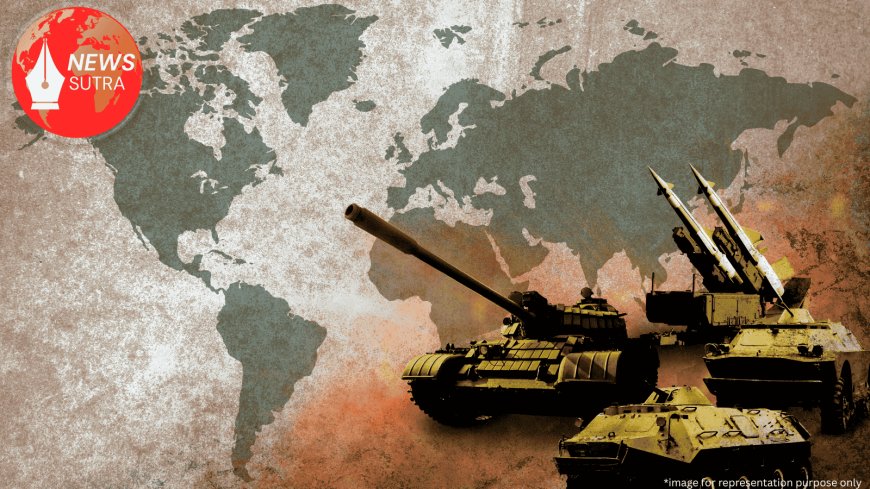On the Brink: Are We Closer Than Ever to World War 3? Scenarios, Triggers, and the Possible Outcomes
Global tensions are rising fast. From Iran to Ukraine to Taiwan, we examine whether World War 3 is becoming inevitable, how it could start, and what its impact could be.

The idea of World War 3 has long hovered on the edge of public imagination—fueled by history, headlines, and geopolitics. But in 2025, with nuclear powers at odds, proxy wars intensifying, and diplomatic institutions under pressure, the question is no longer theoretical: Are we closer than ever to global war?
Analysts, military officials, and political leaders across the globe are sounding the alarm. From the Middle East to Eastern Europe and the Indo-Pacific, the risks of escalation are mounting.
The Current Global Powder Keg
Several global flashpoints are converging at once, making the world more unstable than it has been in decades. Let’s break down the regions that pose the greatest risk:
1. U.S.–Iran Escalation
Following the recent U.S. bombing of Iran’s nuclear facilities, tensions in the Middle East have reached boiling point. Iran has vowed retaliation, and its network of proxy militias can destabilize Iraq, Syria, Yemen, Lebanon, and even the Gulf states. If Iran strikes U.S. assets or allies in the region, Washington could respond with overwhelming force—triggering a broader regional war.
2. Russia–NATO Standoff
The ongoing war in Ukraine has entered its fourth year, with Russian forces heavily engaged in the east and NATO countries stepping up military support. NATO troops are already deployed across Eastern Europe. If Russia targets Poland, the Baltics, or accidentally strikes NATO personnel, Article 5 could be triggered—initiating direct conflict between nuclear-armed superpowers.
3. China–Taiwan Tensions
Beijing has ramped up military pressure on Taiwan through air and naval drills. The U.S. has reaffirmed its commitment to Taiwan’s defense. A blockade or invasion attempt by China could pull Japan, Australia, and the U.S. into a Pacific war, with global trade and tech supply chains severely disrupted.
4. North Korea’s Missile Ambitions
North Korea’s frequent missile tests and nuclear threats add volatility in East Asia. A misfire or miscalculation involving South Korea or Japan could instantly draw in U.S. forces stationed in the region.
How World War 3 Could Actually Start
Global wars rarely erupt suddenly—they unfold through chain reactions. Here are a few realistic scenarios experts worry about:
-
Proxy Conflict Turns Direct: Iran-backed militias attack a U.S. military base in Iraq. The U.S. retaliates inside Iranian territory. Iran launches ballistic missiles at American warships. Israel joins the fray. Russia and China condemn U.S. actions and mobilize in support of Iran, either diplomatically or militarily.
-
Article 5 Invocation in Europe: A Russian missile veers off course and hits a NATO logistics hub in Poland, killing soldiers. NATO invokes Article 5. Russia responds with hybrid warfare and cyberattacks. Full mobilization follows.
-
Taiwan Blockade Escalation: China imposes a maritime blockade on Taiwan. A U.S. destroyer is sunk in the South China Sea. Japan enacts its Self-Defense Clause. The conflict expands across Asia.
What Would World War 3 Look Like?
Unlike previous world wars, a third global conflict would likely combine cyber warfare, disinformation, hypersonic weapons, nuclear threats, and space-based systems. Here’s what it could involve:
-
Global Energy Disruption: Oil fields in the Gulf targeted. Pipelines cut. Energy prices spike.
-
Cyber Attacks on Infrastructure: Blackouts, banking disruptions, and false alerts across Western nations.
-
Nuclear Brinkmanship: Limited tactical nuclear strikes could be considered in battlefield scenarios.
-
Alliances Reconfigured: Nations may be forced to choose sides—splitting the world into two dominant blocs.
-
Global Refugee Crisis: Armed conflict across multiple regions would displace tens of millions.
Could It Be Prevented?
Yes—but it would require urgent, multilateral diplomacy. There is still time for de-escalation, backchannel negotiations, arms control agreements, and economic pressure tactics. However, trust between major powers is at its lowest in years.
Institutions like the United Nations, G20, and International Atomic Energy Agency must be empowered to mediate and verify compliance. The return to Cold War–style communication channels—like military hotlines—could prevent miscalculations from becoming catastrophes.
Final Thoughts
We are not yet in a world war—but the global system is strained in ways it hasn't been since the Cuban Missile Crisis or the early years of World War II. Misjudgments, unchecked nationalism, and fractured diplomacy could tip the balance.
World War 3 will not start in one place—it will ignite everywhere. The world’s leaders still have a narrow window to pull back from the edge.














